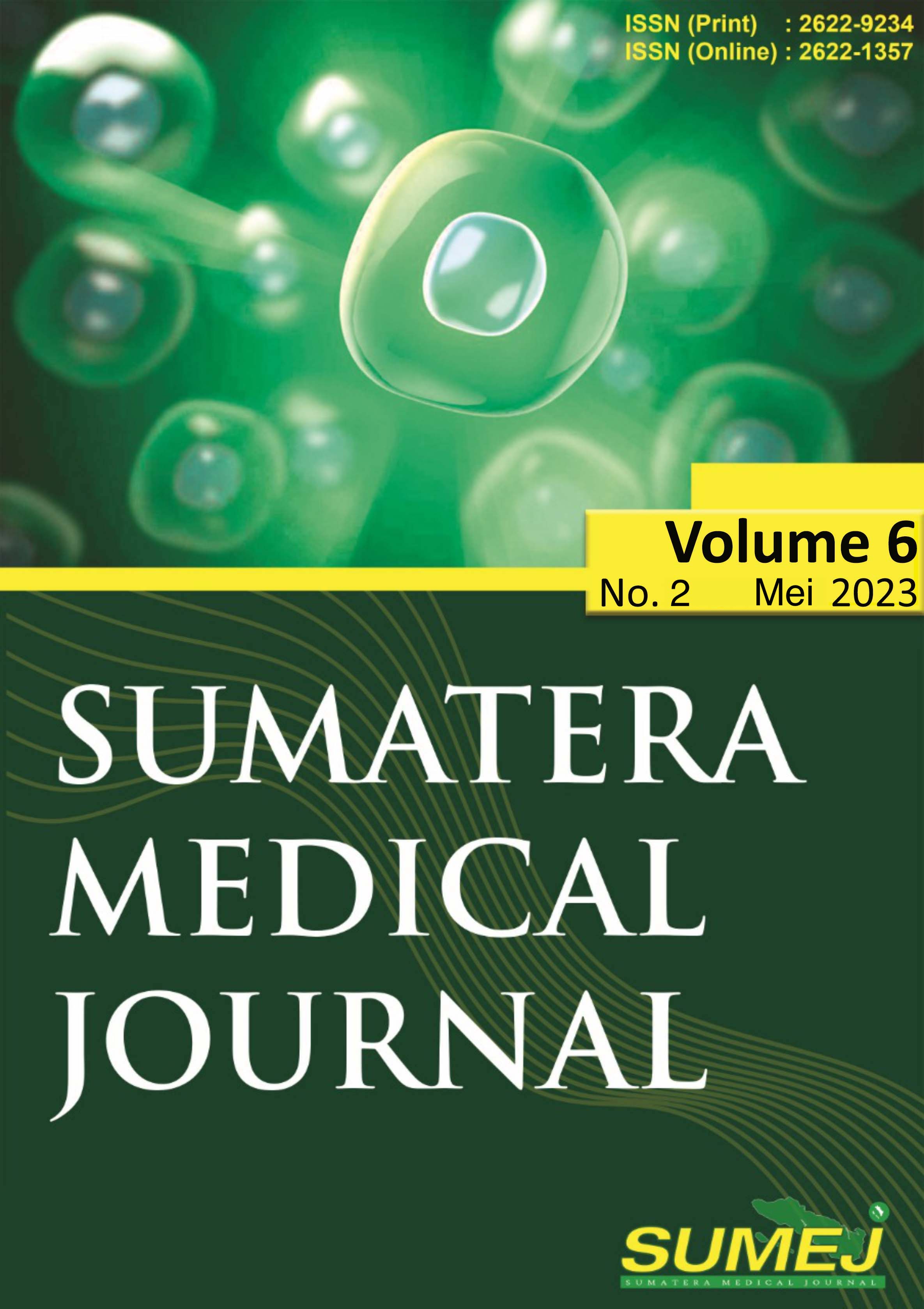Correlation Between Blue Light Exposure from Digital Device Screens and Sleep Quality Among Students in the Faculty of Medicine, Universitas Sumatera Utara Class of 2019
DOI:
https://doi.org/10.32734/sumej.v6i2.11051Keywords:
blue light, gadget, radiation, sleep qualityAbstract
Background: The use of information and communication technology facilities such as cellphones, laptops, computers, and other information facilities is really needed. From several previous studies it was noted that blue light has an impact on sleep quality, as we already know sleep quality is one of the foundations of health. Objective: The aim is to determine the relationship between blue light exposure on digital device screens and sleep quality, knowing the level of blue light exposure and sleep quality. Methods: This research is an analytical study with a cross-sectional design, namely a type of research in which the measurement of the variables is carried out simultaneously at one time. Results: Of the 150 study subjects, there were 64% women, 36% men. Age, 1.30% were 19 years old, 18.70% were 20 years old, 58% were 21 years old, 20% were 22 years old, 2% were 23 years old. Blue light exposure, bad 94%, good 6%. Sleep quality, bad 87.30%, good 12.70%. The relationship between blue light exposure and sleep quality obtained p-value <0.01 and coefficent r is 0.663. Conclusion: there is significant relationship between blue light exposure on digital screen device and sleep quality of student.
Downloads
References
Asosiasi Penyelenggara Jasa Internet Indonesia (APJII). Survei penetrasi dan perilaku pengguna internet Indonesia 2019–Q2 2020. Jakarta: APJII; 2021.
Kasiati, Rosmalawati NWDK. Kebutuhan dasar manusia I. Jakarta: Kementerian Kesehatan Republik Indonesia; 2016.
Gradisar M, Wolfson AR, Harvey AG, Hale L, Rosenberg R, Czeisler CA. The sleep and technology use of Americans: findings from the National Sleep Foundation's 2011 Sleep in America poll. J Clin Sleep Med. 2013;9(12):1291–9.
Hidayat AA. Pengantar kebutuhan dasar manusia. Jakarta: Salemba Medika; 2006.
Jibril MN, Abubakar AA, Auwal R, Shehu AY. Pattern of physical activity, sleep duration and quality of life among individuals with diabetes mellitus in selected health facilities in Kano, Northwestern Nigeria. J Nigeria Soc Physiother. 2021;20(1):23–32.
Faizzuddin M. Hubungan antara pembelajaran virtual terhadap regulasi tidur pada mahasiswa Fakultas Kedokteran Universitas Sumatera Utara angkatan 2018 [skripsi]. Medan: Universitas Sumatera Utara; 2021.
Demirci K, Akgönül M, Akpinar A. Relationship of smartphone use severity with sleep quality, depression, and anxiety in university students. J Behav Addict. 2015;4(2):85–92.
Harvard Health Publishing. Blue light has a dark side. Harvard University. Available from: https://www.health.harvard.edu/staying-healthy/blue-light-has-a-dark-side. Accessed 2021 Mar 16.
Tähkämö L, Partonen T, Pesonen AK. Systematic review of light exposure impact on human circadian rhythm. Chronobiol Int. 2019;36(2):151–70.
Romero-Blanco C, Rodríguez-Almagro J, Onieva-Zafra MD, Parra-Fernández ML, Prado-Laguna MC, et al. Physical activity and sedentary lifestyle in university students: changes during confinement due to the COVID-19 pandemic. Int J Environ Res Public Health. 2020;17(18):6567.
Patil A, Bhavya SC, Srivastava S. Eyeing computer vision syndrome: awareness, knowledge, and its impact on sleep quality among medical students. Ind Psychiatry J. 2019;28(1):68–73.
Downloads
Published
How to Cite
Issue
Section
License
Copyright (c) 2023 Sumatera Medical Journal

This work is licensed under a Creative Commons Attribution-NonCommercial-NoDerivatives 4.0 International License.
The Authors submitting a manuscript do so on the understanding that if accepted for publication, copyright of the article shall be assigned to Sumatera Medical Journal (SUMEJ) and Faculty of Medicine as well as TALENTA Publisher Universitas Sumatera Utara as publisher of the journal.
Copyright encompasses exclusive rights to reproduce and deliver the article in all form and media. The reproduction of any part of this journal, its storage in databases and its transmission by any form or media, will be allowed only with a written permission from Sumatera Medical Journal (SUMEJ).
The Copyright Transfer Form can be downloaded here.
The copyright form should be signed originally and sent to the Editorial Office in the form of original mail or scanned document.











